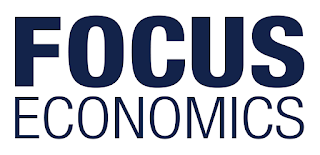The recovery trend remained intact in July following the solid rebound in Q2, benefiting from a reopening of the global economy and robust demand for health products. Exports of goods accelerated markedly in July and growth in industrial production stabilized despite flooding along the Yangtze river. The domestic economy is gathering steam, even with persistent weakness in household spending. Retail sales declined for the seventh month in a row in July, mostly reflecting social distancing measures. However, the drop in nominal fixed investment narrowed in January-July due to robust property investment and strength in some service sectors.
In the political arena, planned talks between China and the U.S. to evaluate the progress of the Phase One trade deal were postponed. Both sides cited scheduling conflicts and the aim to give China more time to meet its commitments under the deal. • Although China will post its weakest growth in decades in 2020, the outturn will not be as bad as previously expected due to a relatively fast recovery from the pandemic. The main downside risks are a re-escalation of trade tensions with the U.S., a prolonged global economic downturn and a second wave of Covid-19. Conversely, more aggressive policy support could spur growth.
FocusEconomics panelists see the economy growing 1.9% in 2020, which is up 0.4 percentage points from last month’s forecast, before accelerating to 7.7% in 2021. • Inflation ticked up from June’s 2.5% to 2.7% in July. The increase mostly reflected higher prices for pork and fresh vegetables as floods disrupted food supply. Looking forward, inflation is expected to remain at current levels. Meanwhile, the drop in producer prices softened in July as prices for raw materials increased.
FocusEconomics panelists forecast that inflation will average 2.8% in 2020, which is unchanged from last month’s estimate, and 2.1% in 2021. • The People’s Bank of China (PBOC) has refrained from adding monetary stimulus in recent weeks as the economy appears to be on a path to recovery. The PBOC uses a complex system to implement monetary policy, including key benchmark rates, open market operations and reserve requirement ratios. Panelists project the one-year deposit and loan prime rates to end 2020 at 1.44% and 3.64%, respectively, and 2021 at 1.43% and 3.64%. • The yuan strengthened in recent weeks and it is currently trading at levels last seen in January, reflecting a stronger recovery compared to other major economies. On 21 August, the yuan traded at 6.92 CNY per USD, appreciating 0.9% month-on-month. A challenging global economic backdrop, however, will prompt the yuan to depreciate by year-end. Our panelists see the yuan ending 2020 at 7.06 CNY per USD and 2021 at 7.03 CNY per USD.
The above analysis was compiled by Focus Economics of Barcelona, Spain
In the political arena, planned talks between China and the U.S. to evaluate the progress of the Phase One trade deal were postponed. Both sides cited scheduling conflicts and the aim to give China more time to meet its commitments under the deal. • Although China will post its weakest growth in decades in 2020, the outturn will not be as bad as previously expected due to a relatively fast recovery from the pandemic. The main downside risks are a re-escalation of trade tensions with the U.S., a prolonged global economic downturn and a second wave of Covid-19. Conversely, more aggressive policy support could spur growth.
FocusEconomics panelists see the economy growing 1.9% in 2020, which is up 0.4 percentage points from last month’s forecast, before accelerating to 7.7% in 2021. • Inflation ticked up from June’s 2.5% to 2.7% in July. The increase mostly reflected higher prices for pork and fresh vegetables as floods disrupted food supply. Looking forward, inflation is expected to remain at current levels. Meanwhile, the drop in producer prices softened in July as prices for raw materials increased.
FocusEconomics panelists forecast that inflation will average 2.8% in 2020, which is unchanged from last month’s estimate, and 2.1% in 2021. • The People’s Bank of China (PBOC) has refrained from adding monetary stimulus in recent weeks as the economy appears to be on a path to recovery. The PBOC uses a complex system to implement monetary policy, including key benchmark rates, open market operations and reserve requirement ratios. Panelists project the one-year deposit and loan prime rates to end 2020 at 1.44% and 3.64%, respectively, and 2021 at 1.43% and 3.64%. • The yuan strengthened in recent weeks and it is currently trading at levels last seen in January, reflecting a stronger recovery compared to other major economies. On 21 August, the yuan traded at 6.92 CNY per USD, appreciating 0.9% month-on-month. A challenging global economic backdrop, however, will prompt the yuan to depreciate by year-end. Our panelists see the yuan ending 2020 at 7.06 CNY per USD and 2021 at 7.03 CNY per USD.
The above analysis was compiled by Focus Economics of Barcelona, Spain


